What Is a Loafing Shed?
Loafing shed definition and other useful facts you might not be aware of before
Loafing shed definition and other useful facts you might not be aware of before
If you have horses, you have probably thought of building a shed for them. And if you are one of those horse owners who prefer keeping his animals outdoors, having a good loafing shed is the optimal solution.
It is easy to build and maintain, and besides, it is rather cheap. And also, equine sheds are perfect for the horses who spend most of their time in pasture. So today we will tell you about loafing sheds, their purpose of use, and all the basic information one must know before building a run-in shed for horses.
What Is a Horse Loafing Shed?
If you have never heard of loafing sheds for horses, you might be wondering what this term means. So basically, this is a type of a horse pasture shelter. Loafing sheds are three sided sheds with the roof on top that you can often see in pastures all over the countryside. By the way, they are built not only for horses but for any other animals and cattle that spend a lot of time outdoors.
What is a loafing shed used for? Since it is basically a shelter, its major goal is to provide an animal with proper protection and shelter from different external factors, such as heat, sun, wind, rain, and snow. Also, it allows animals to come and leave as they please and move freely all over the pasture!
For horses, this is especially important since they need quite a lot of physical exercise.
These animals feel better and are healthier if they can move enough during the day instead of just standing in a stable. Also, it was proved that horses who have access to fresh grass and have enough exercise experience fewer issues connected with colic, ulcers, joint issues and respiratory problems.
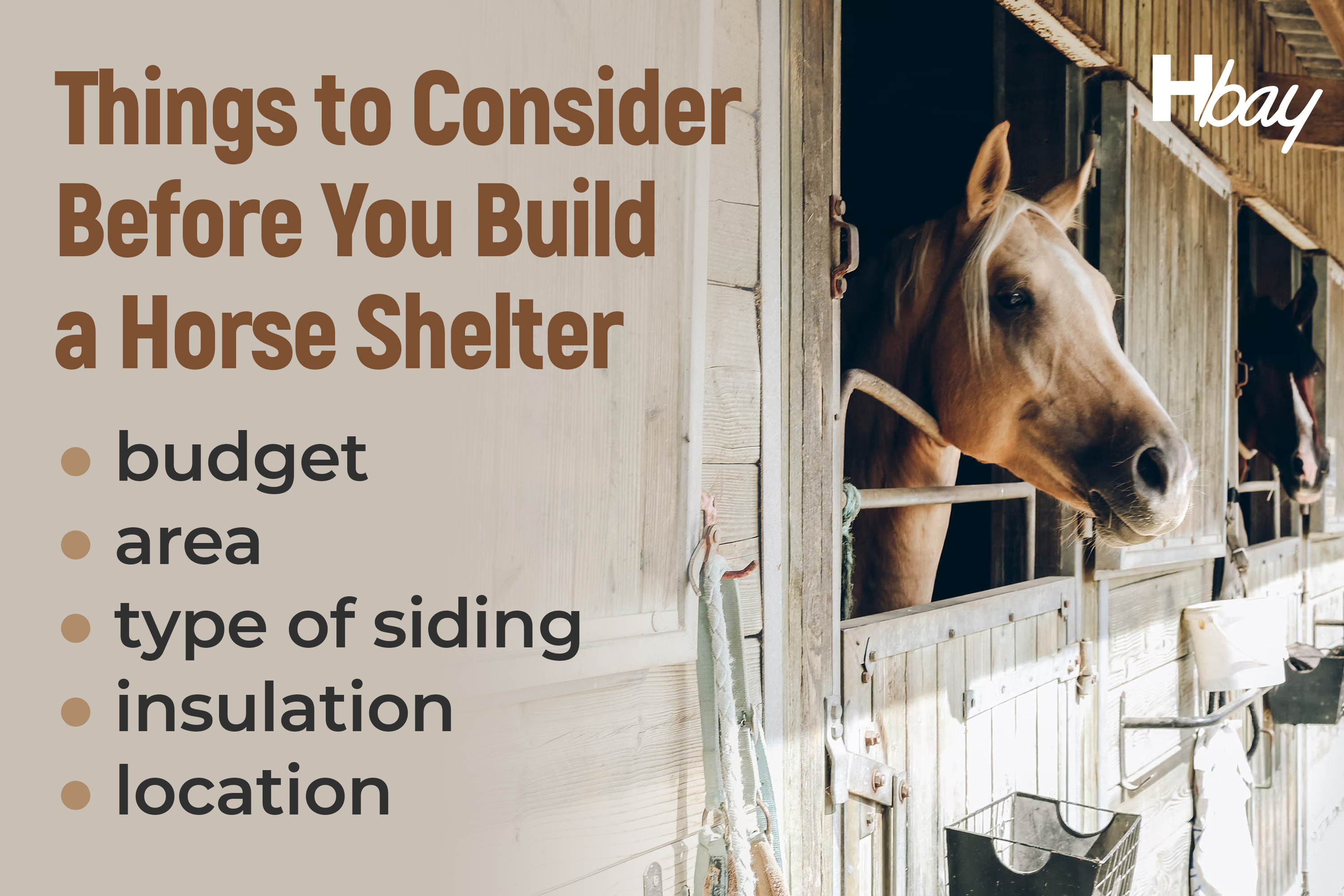
Housekeepingbay.com
Sometimes, if owners want so, these sheds may include feeding stations and built-in storage areas. In this case, they will be more like a hybrid of a shed and a barn. But at the same time, loafing sheds can be as simple and elaborate as you want! Quite many farmers simply build their loafing sheds as a roof that is set on posts to provide shade and mere protection.
Such a simple structure is also the reason why building a loafing shed costs so little in comparison to more complicated farm buildings, for instance, barns. So if you are looking for something affordable, useful, and easy-to-build for your horses or other farm animals, consider building a loafing shed.
And if you do decide to have one, take into consideration the following important nuances so that your construction is safe and long lasting providing your farm animals with proper shelter.
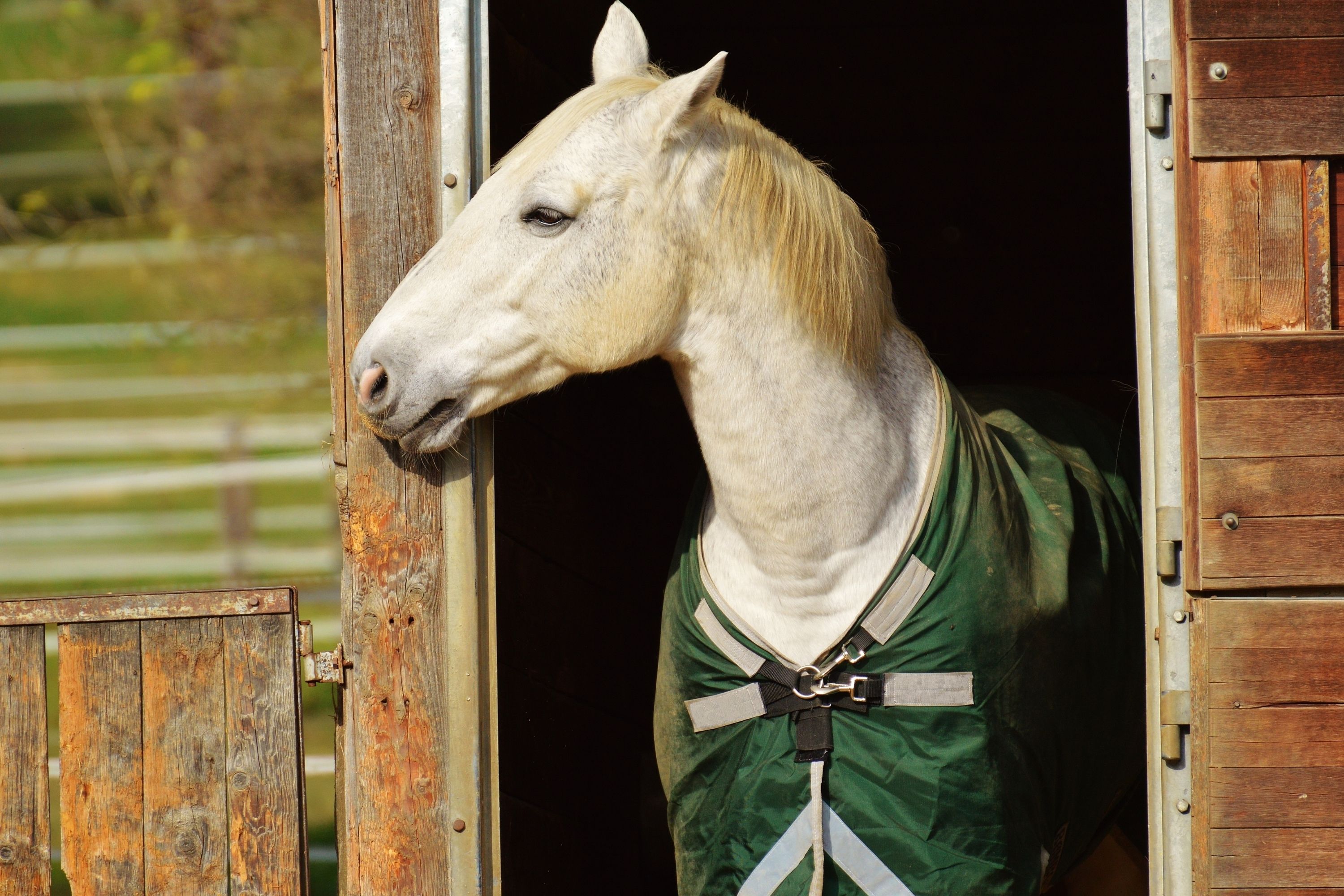
Credits: Alexas_fotos, via Canva.com
What Is the Average Size Of a Loafing Shed?
In most cases, common run-in horse loafing sheds are twelve to fourteen feet deep, with around twelve running feet for every one or two horses. However, there is another common measure which is one hundred square feet for the first horse and fifty square feet for each additional horse.
But basically, the exact size of the shed will hang upon the size of your horses, their number, and their habits. Also, the herd dynamics matter a lot. For instance, if the space in a shed is way too tight, the alpha horse may force the low horses out!

housekeepingbay.com
Site And Orientation
Before building loafing sheds, you must decide where it will be standing. The ideal place for such an open air shed is on a high and dry spot. It will be even better if this is the place that your horses already know well and where they enjoy staying and hanging out.
As for the orientation, make sure the shed is placed so that it protects the animals from the direct sun in summer and from the cold winds in autumn and winter. Since they come from the west and north, the perfect orientation will be the compromise between these two.
Of course, your construction will need a built-up foundation of sand or packed stone in order to provide proper drainage since the construction will be experiencing quite a lot of traffic! In addition, after the shed is built, you will have to monitor the condition of the ground regularly and maintain the foundation. On average, it must be replaced once a year to make sure the footing is dry.
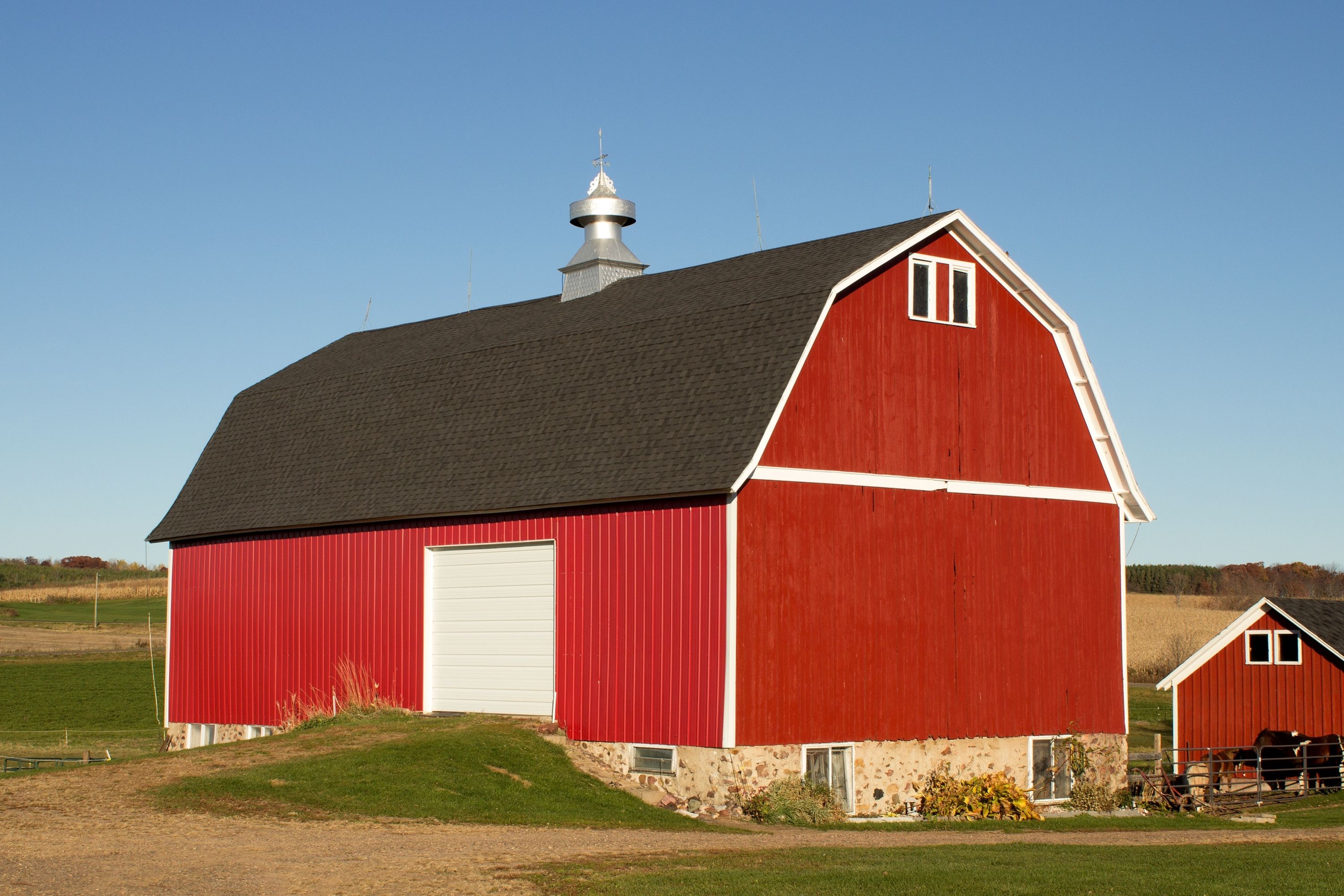
Credits: rookman, via Canva.com
Access to a Horse Loafing Shed
To prevent possible fights between your horses (as well as to discourage the alpha horse from devicting the low horses), consider dividing the shed construction into smaller sections. This can be done either with ¾ walls or with a full-size dividing wall.
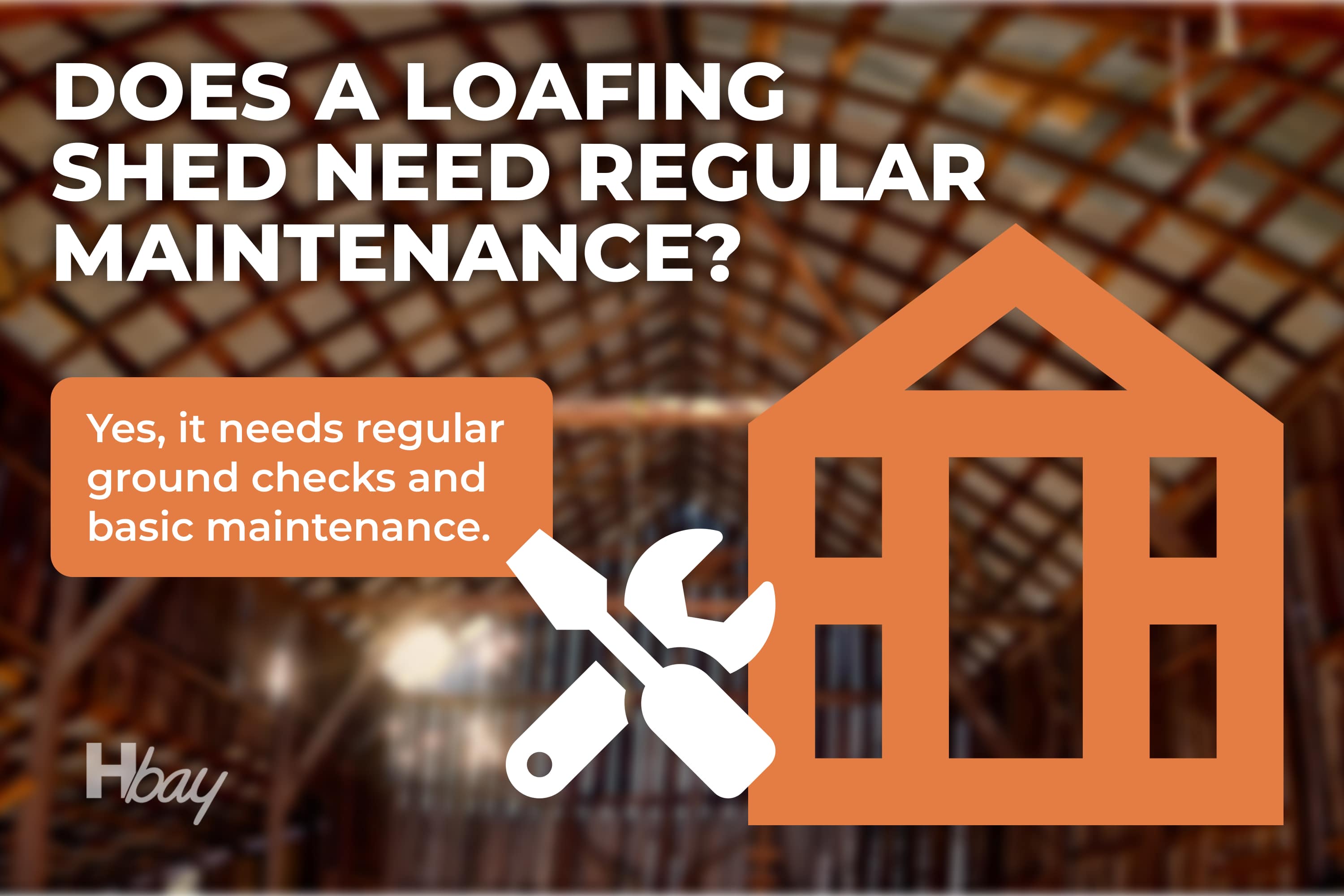
housekeepingbay.com
Such a design will also allow you to move your horses freely around and separate them in case you need it.

Add Eaves And Gutters
Eaves and gutters, when being added on one or both sides, will not only allow you to extend the “dry zone” that the shed provides. They will also contribute to the footing and the whole building’s long life and term of service since they will be keeping water away from it.
Material Needed
When building a horse shelter, you can basically make use of any materials whether it is wood or metal. However, do please note that if you choose to use metal, you will have to add a wooden kick wall of four to six feet inside.
This is needed for protecting your horses from lacerations since all the places where these animals have direct access to metal items and siding poses a high risk of severe injury!
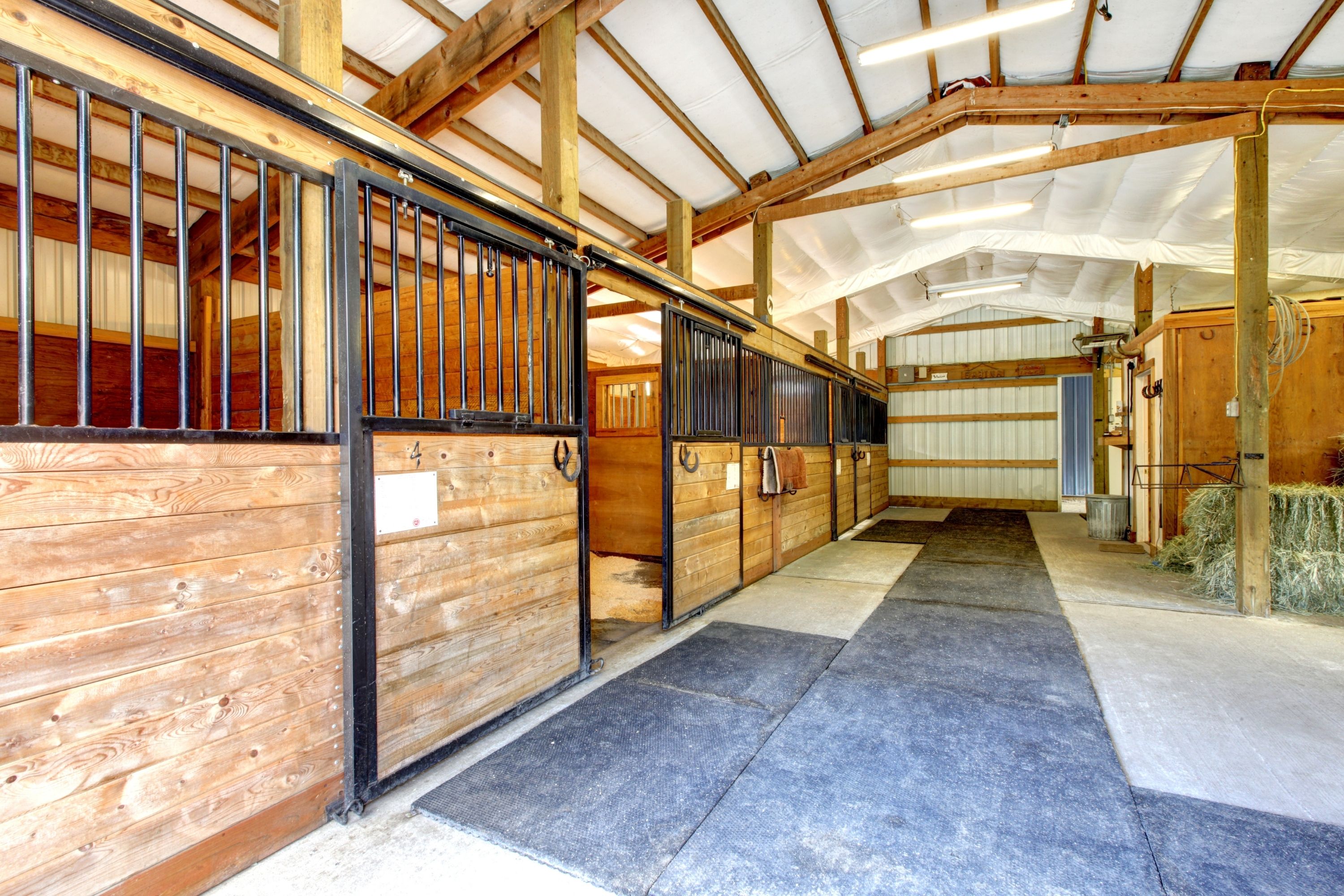
Credits: irina88w, via Canva.com
Additional Amenities
Quite often, horse owners decide to add feeding stations or storage compartments to their run-in sheds. You could often see those sheds with a feeding station located between the two run-ins, for example. In addition, you could think of such options as storing grooming supplies or medicine in your loafing shed to keep everything you need at hand.
When being aware of all of these nuances and features, you will be able to easily build a run-in loafing shed that will perfectly suit your horses or any other farm animals you keep.
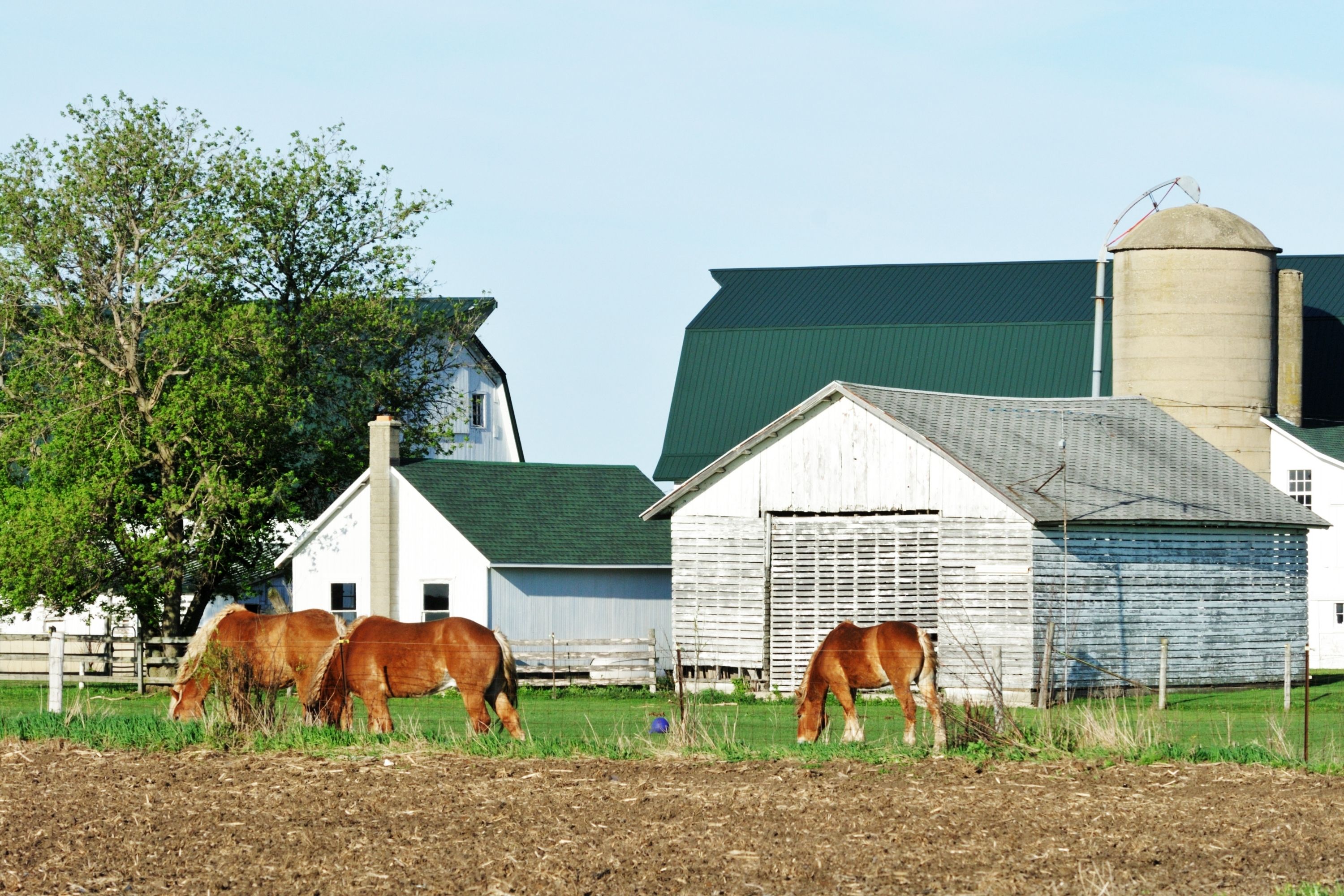
Credits: steverts, via Canva.com
Things to Consider Before You Build a Horse Shelter
If you keep horses and you decide to build a shed for them, it’s a good idea. However, to do everything right and end up with a proper and stable construction that will survive any climate conditions and weather, we recommend you consider a few essential nuances. With those in mind, you will surely avoid most of the common mistakes shed owners make when building the shelter.
- If money is no object for you, think of building your open sided shed in concrete blocks. They are extremely durable and besides, this material is perfect for the cold climate. In addition, sheds made of concrete blocks provide better insulation that is cooler in summer and way more protective in autumn and winter.
- If you decide to build a horse shelter, remember that its base pad needs to be higher than the area around it for allowing proper run off. If you don’t do this, the area will get worn down after a while with usage becoming lower and collecting water. This is why it is essential to have gravel, as well as screenings and a pad of dirt to provide proper sloping away from the construction.
- When building a loafing shed, consider placing its posts into the ground ⅓ of their total length. It will prevent the whole building from being flipped over during the windstorm.
- If you decide to cover your shed with metal siding, consider looking around for metal siding seconds (e.g. colors that were not accurate enough or the orders that were not paid after they were ordered). This will allow you to have quite a significant discount!
- If your loafing shed has metal siding, always have it lined to avoid incidents and traumas!
- In case your shed is going to be lined with plywood, we recommend you place a layer of insulation between these two layers.
- Avoid building a shed in the middle of the field! In case of emergency, it will be way harder to get to the access point from there. Besides, walking through the whole field to feed your horse in the snow or rain is also far from being pleasing. So you’d better locate it in a place where it can be easily converted into a stall or run in a paddock.
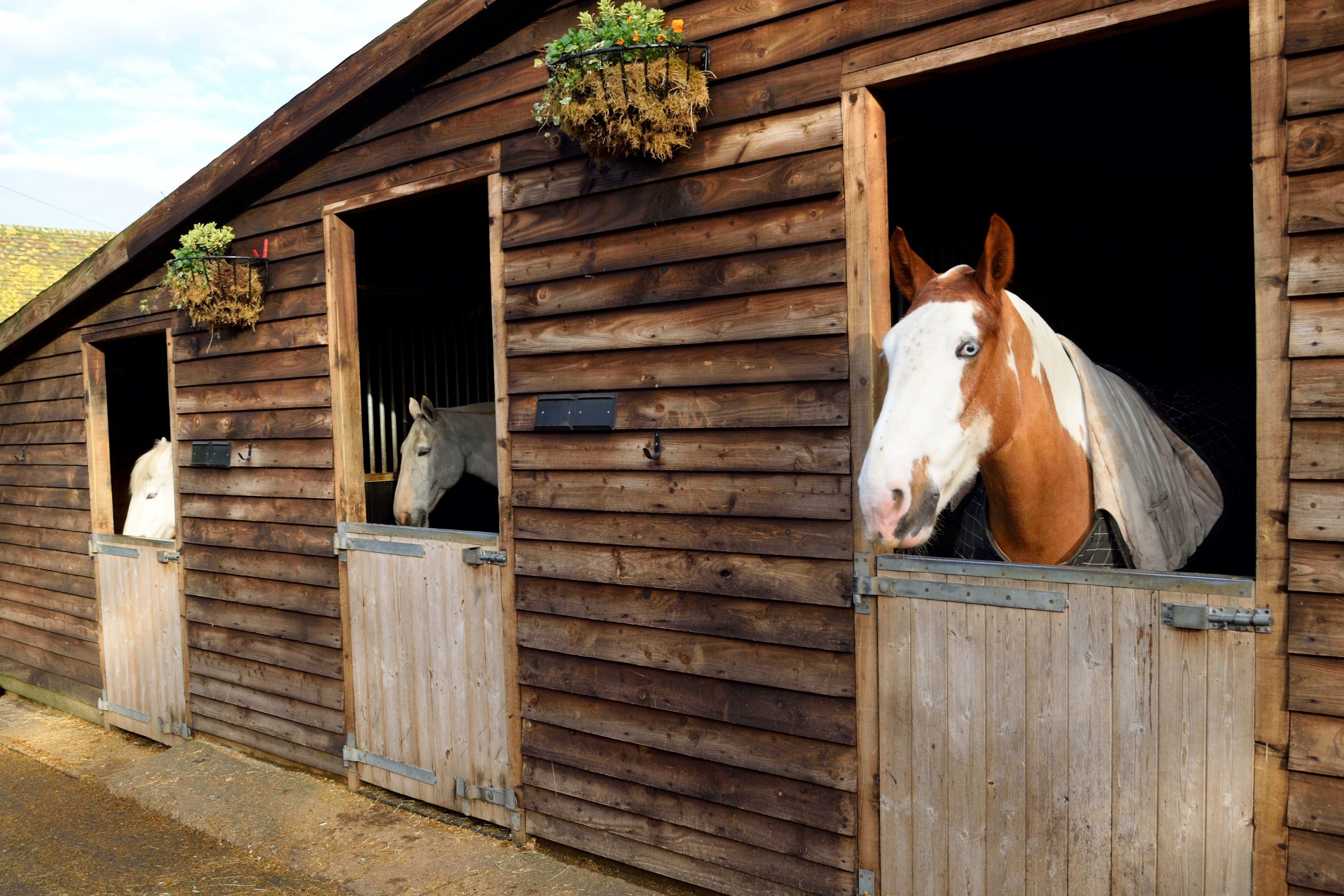
Credits: savoilic, via Canva.com
With all these tips and handy life hacks, you will not only be able to build a loafing shed for your horses that will protect them from sun and rain. You will also make it work from the very first day of use because you avoid many mistakes that novice shed-builders make.
Make sure you use our tips, and your farm life will be significantly easier!
Ever wished paint sampling was as easy as sticking a sticker? Guess what? Now it is! Discover Samplize's unique Peel & Stick samples. Get started now and say goodbye to the old messy way!
Get paint samples




Frequently Asked Questions
⭐ How much does it cost to build a loafing shed?
It depends on its size and materials used, but a 12’x24’ shed can cost around four thousand dollars.
⭐ Does a loafing shed need regular maintenance?
Yes, it needs regular ground checks and basic maintenance.
⭐ Does a loafing shed need ventilation?
No, it doesn’t need one since this shed has only three walls which allows natural ventilation.
17 thoughts on “What Is a Loafing Shed?”
Leave a Reply



Hi! Could you please tell what materials are best to use for horse sheds?
Hello! For the floor material, you need something that gives the best support to horses’ legs because they often stand in their stalls for long periods of time. Materials like clay, sand, or soil (with an underlayer of gravel for better drainage) are best. As for the walls material, hardwood is the best.
Do I need to hire someone to make a loafing shed plans? And do I need plans at all?
I’m sure you need a plan, like with any constructinal work on a property. And I’d recommend you hire a professional for making that plan for sure!
What is a horse loafing shed average price? Can anyone share at least approximate numbers, please?
The price will depend on the size of the shed. E.g., a 12×20′ shed will cost around $3,655, and a 12×24′ shed will cost around $4,145.
Does anyone know whether there are loafing shed kits out there? I mean, are there readily available instruments for building a shed that are packed in a kit, or I need to buy everything myself?
When we were building the shed, we bought all the instruments in a store. I guess that, even if there are kits, it’s still wiser to buy yourself. The tools you use will depend on the material of a shed anyway.
Does nayone know whether it’s required to build a loafing shed for goats? we don’t have a big herd, it’s just a couple of goats.
In my opinion, you could build a small shed for them, especially if you keep them outdoors mostly. But if they have regular accommodation, the shed might not be essential.
I want to build a loafing shed on my property, but since it’s going to be the first shed I’ve ever had, I need your advice. What’s the 12×24 loafing shed cost?
Well, it depends on what you want to make it from, but the average cost of a 12×24 loafing shed usually starts at around $7,000. If you want to add a tack or feed room to it, the price will be higher, approximately $8,500-$9,000.
How much does a loafing shed cost? I want to hire someone to build it for us but I have no idea of what the approximate price could be.
What does loafing mean in a loafing shed term? I’m just wondering with no specific purpose!
I’m not sure but my guess is that it has something in common with the verb “to loaf” which means to spend time in an idle way. Perhaps, this word is used in the name of a shed because it allows animals to come and go asif they pointlessly wander around the field.
How to build a horse shelter? Shall we hire someone, or can it be done by ourselves? Did anyone have such an experience? I’ll be grateful for any ideas and help!
Hello. My family and I built a loafing shed last year. We simply placed four posts in the ground and attached a roof to them. That’s if we say it in a few simple words.
I guess you can do it yourself if you have at least some minor building skills. But if you never built anything on your own, better ask for professional help.